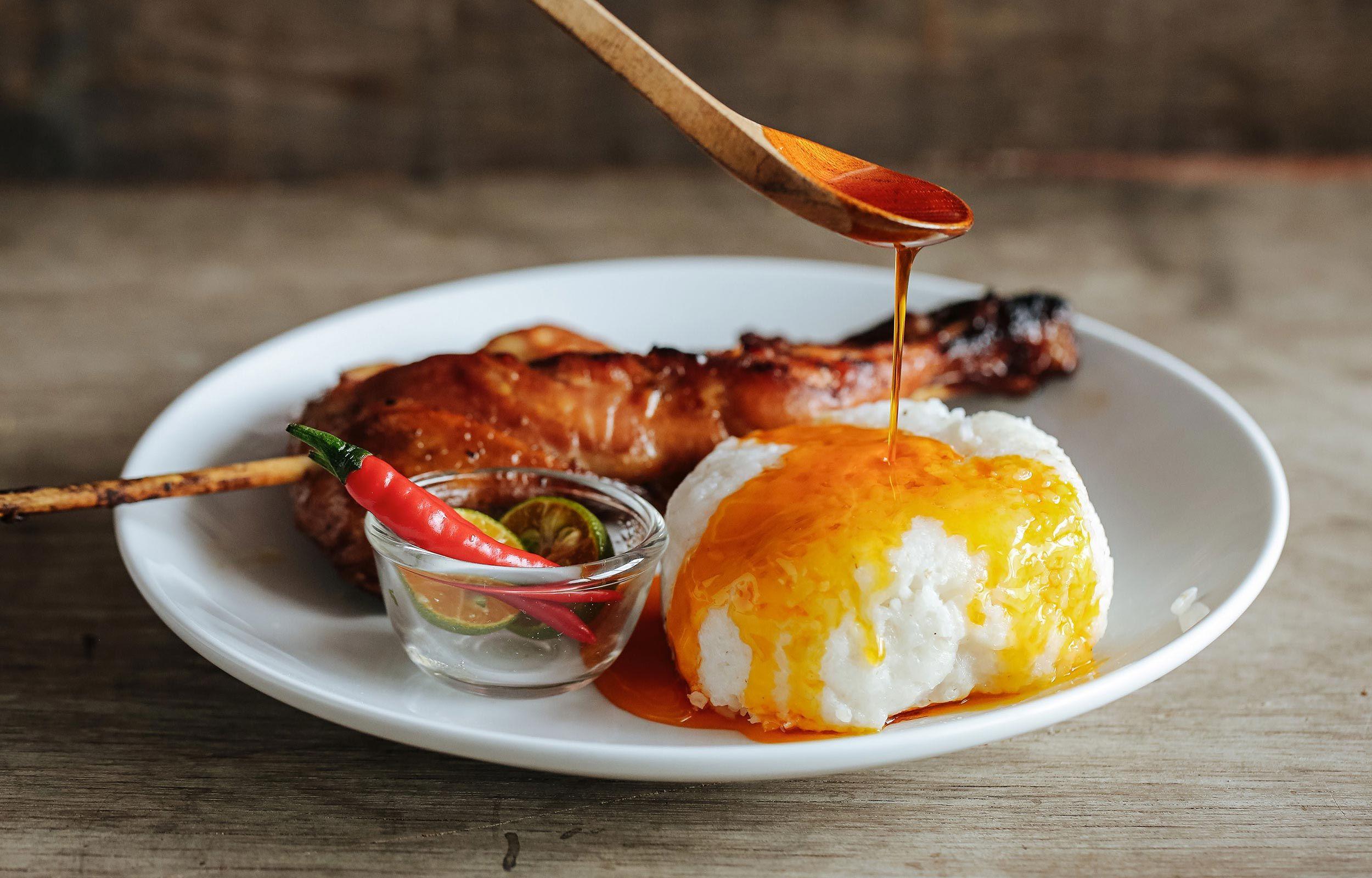You're probably guilty of drowning your unli-rice in this glorious orange condiment (or sauce? dressing?). While I may not be able to remember the first time I tried chicken oil, a visit to any inasal joint is now never complete without it.
In honor of this wonderful liquid, let’s look at how to make chicken oil at home and how to enjoy it with our meals.
A Little Background on Chicken Oil
Chicken inasal is cooked very differently from your usual chicken barbecue.
For one, it’s basted using oil that’s been steeped in atsuete (annatto) and garlic, giving it its distinct color and peppery aroma. It’s this same oil that we see together with the bottles of soy sauce and vinegar on the tables of an inasal restaurant.
Though it’s difficult to trace the exact origins of chicken oil, it isn’t that far-fetched to think that cooks figured out that they could use of all that fat and skin that they’d take off the meat.
I’d like to imagine that those guys trimming the chicken fat just looked at each other one day and said “You know what? This is too good to throw away. Let’s just cook it instead!", with the end results being chicken skin they could snack on all day, and our beloved rendered chicken oil.
Of course, it wouldn’t be too long before those same guys would again look at each other and go, “Why are we still buying oil when we can use this stuff instead?”
How To Make Chicken Oil
If you’d like to have a batch always handy around the house, here are the basic steps to making your own chicken oil.
Render Chicken Fat
Either trim excess fat off your chicken, or stock up on chicken skin from the palengke or talipapa.
Cut up the skin to small 1-inch pieces. Smaller pieces render easier than bigger pieces. Plus, they fry up into delicious chicken skin crumbles!
Heat chicken skin in a pan over low heat to draw out the chicken fat, or schmaltz. Once the skin is crispy and golden, remove from heat—and don't forget to salt before snacking. Transfer the chicken fat to a heatproof container.
Add Atsuete and Garlic
Add a tablespoon or so of atsuete (seeds or powder will work) plus a couple of cloves of crushed garlic to the warm oil. You can also add a bit of salt, if you want.
Store It
Bottle it up, and store it in the fridge if you aren’t consuming this right away. It’s best consumed within 3 to 5 days. Removing the solids may help in extending its lifespan, but you’ll sacrifice the taste if you keep it for more than a week.
How to Enjoy Chicken Oil
There is nothing like pouring the oil over a cup of steaming white rice. Let that warmth wake up all the aromatics from the garlic and atsuete, and take a whiff as the steam rises. Enjoy each bite of your inasal with a spoonful of this heavenly mixture.
No need to pour the chicken oil over the inasal. The meat’s already been basted with the stuff, and you got some on your rice already! Too much oil will overload your palate (and arteries).
And don't stop at inasal! Any ulam can benefit from the wonders of chicken oil and rice.
If you're the type to add soy sauce to your chicken oil and rice, try using plain salt instead. This lets the natural essence of the garlic and atsuete really come through.
Always go for freshly made chicken oil if you can. Check by smelling the oil. If it’s still pungent with garlic and atchuete, then you’re good to go.
This article was originally published in 2019. Special thanks to Chef Jayps Anglo of Sarsa Kitchen+Bar for providing the information found here.
